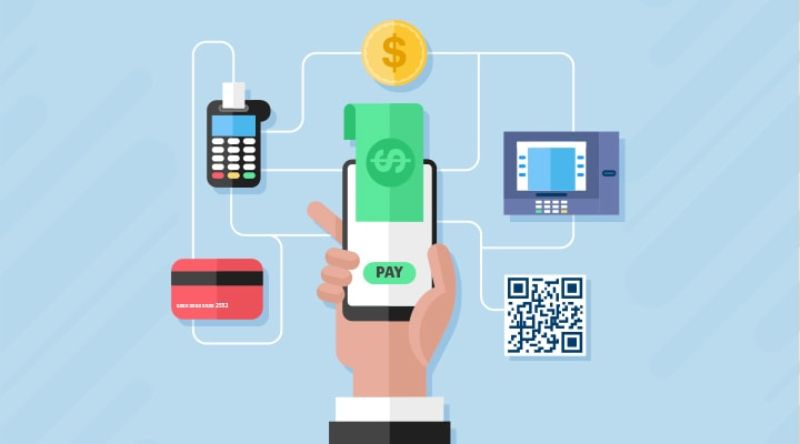Emerging Payments Technologies: In recent years, the financial services, retail, and tech industries have introduced new ways to pay for goods and services through traditional online, mobile, and point-of-sale (POS) channels. Increasing consumer satisfaction and expanding business opportunities are two common goals of these new methods. As the offering of payment options continues to evolve, there are a few pioneers.
Technology has always been the keystone of the development of the banking and financial services industry. It has continually revolutionized the way financial services are designed, regulated, distributed, and consumed. However, technology has gone behind the scenes in recent years and taken center stage alongside financial services. Convergence gave birth to the “FinTech” movement, and digital payments have been one of its main drivers.
Over the years, emerging FinTechs have grown from disruptive threats to powerful partners that offer technological innovations and new opportunities that go far beyond the realm of traditional financial services. As we continue our journey to digital India in 2021, it is imperative to build a more robust infrastructure, continuously innovate and develop a policy framework that encourages the adoption and adoption of digital payments. Technology will continue to shape the focus of financial services companies on customer centricity and initiatives related to trust, privacy, and security. And while enabling revolutionary insights from the main currency – data.
Here are the best top ten technology trends that expect to shape the digital payments landscape in 2021.
Table of Contents
Digital wallets
These apps store credit card information on a mobile device such as a phone or watch. Apple Pay, Android Pay, and Samsung Pay are the best-known examples, but many merchants also develop their digital wallets.
The applications communicate with compatible POS systems to enable transactions. Digital payments offer a high level of security through measures such as tokenization, which replaces account numbers and other sensitive data with randomly generated values. Tokenization and other dynamic data elements make it difficult to counterfeit digital wallets.
Hybrid online and mobile systems
A hybrid system uses a combination of PC and mobile phone so that consumers can, for example, authenticate online purchases with their smartphone. A prime example is the iPhone’s ability to enable payments on a Mac.
EMC technology
These credit and debit cards contain an integrated chip in addition to the conventional magnetic strip. The chip is much more difficult to clone than a magnetic tape. In addition, the chip generates unique data for each transaction, which enables the card to be validated with every use. Thus, smart cards can help reduce card fraud (CP), such as counterfeit and lost or stolen cards.
Contactless payment
Instead of swiping or inserting a card, contactless devices allow consumers to keep their payment method – like a card, phone, or smartwatch – on or near the merchant’s terminal. Similar to EMV cards, a chip contains the information needed to complete the transaction.
5G
The latest generation of 5G radio technology increases the volume and reliability of data. Banks will use it to secure financial applications by improving customer authentication. Payments via apps are getting faster and more secure.
Zero Trust Cybersecurity
The need for data protection increases year by year. Cyber crime is one of the fastest-growing extents of crime. Zero Trust systems allow businesses to improve cybersecurity by approving every packet of information that passes through their network.
Quantum computing
Using quantum mechanics, scientists are building computers that can solve problems that current technology cannot. It’s not ready for action yet, but the research is encouraging that executives are investing in the technology. Faster computers will generate new trading strategies and improve fraud, risk, and portfolio management.
Augmented and mixed reality
These technologies merge the physical and virtual worlds and use digital information to allow people to connect to both at the same time. Financial companies use it to track how consumers want to interact with their investments.
Smart increase
It is the latest upgrade in artificial intelligence. With the help of deep neural networks that work like the human brain, it helps financial advisors personalize advice for each client.
Blockchain
Blockchain payment technology will continue to advance and will be one of the biggest trends in 2019. Merchants can now accept crypto payments online and in the retail environment thanks to the use of QR codes. The blockchain is widely used for everyday transactions, including property and car titles, legal contracts, government contracts, retail inventory, and distribution. We also anticipate a handful of well-known brands will accept cryptocurrencies, including one or two major retailers.(Emerging Payments Technologies)
Conclusion
Therefore, payment cards like credit and debit cards are likely to dominate the payments landscape for the foreseeable future. But other payment methods will also gain in importance over time.
An intelligent strategy for merchants and other players in the payments ecosystem is recognizing the continued importance of payment cards while paying close attention to emerging trends in technology adoption. (Emerging Payments Technologies)
ALSO READ: Blockchain A Comprehensive Solution For The Production And Distribution Of Films!
- Drones: Basic Uses, Information, Features & More – 2024 - April 9, 2024
- When to Use Asymmetric vs Symmetric Encryption - April 8, 2024
- 7 Key Benefits of opting .NET for Web Development in 2024 - April 6, 2024




Leave a Reply